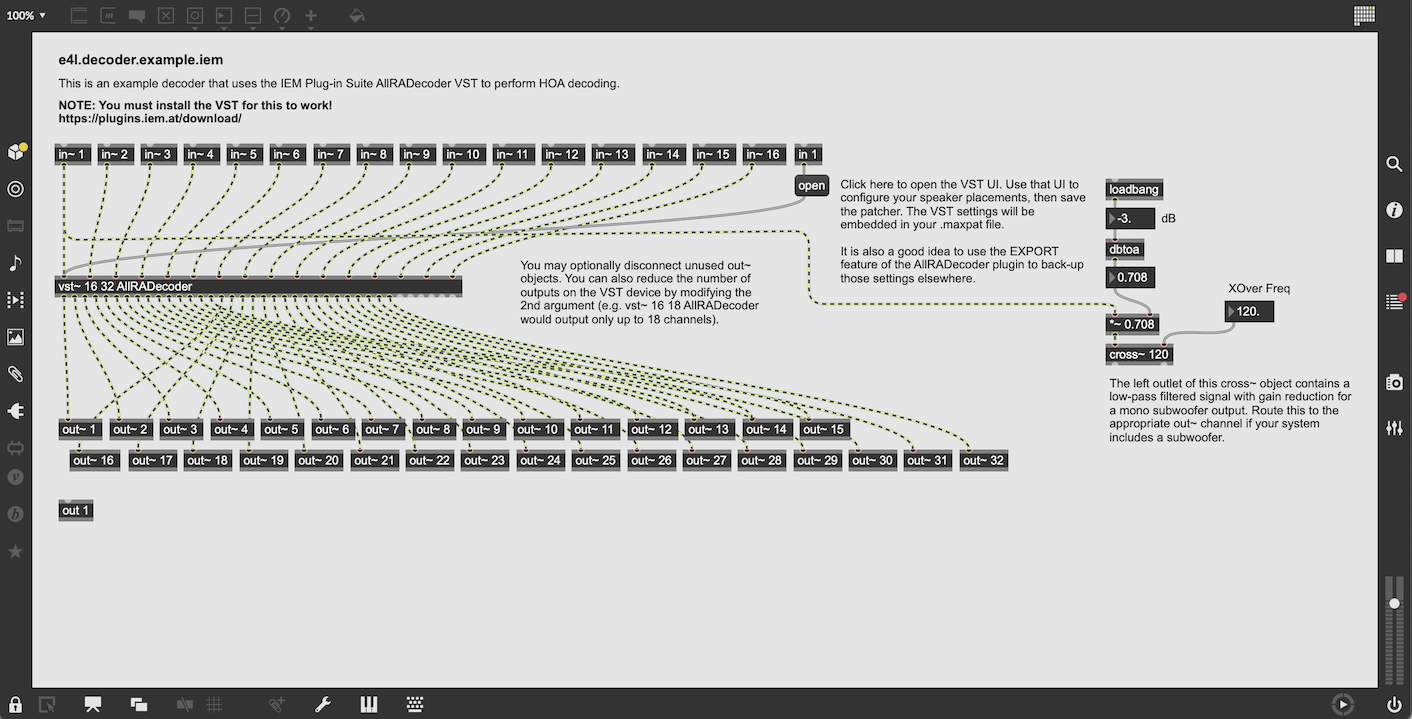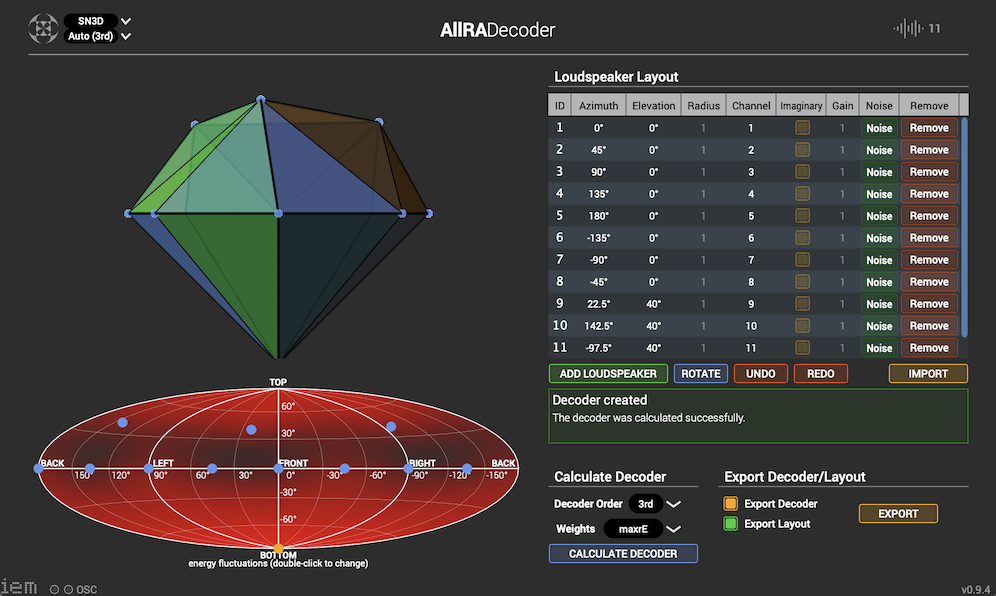Using the IEM AllRADecoder - EnvelopSound/EnvelopForLive GitHub Wiki
The IEM Plug-in Suite is a collection of high-quality open-source Ambisonics tools created by the Institute of Electronic Music and Acoustics, distributed in the VST format. The package includes an AllRADecoder VST which is suitable for high-order decoding. This guide describes how to embed this device within a custom decoder for E4L.
Getting Started
- Download and install the IEM Suite — https://plugins.iem.at/download/
- Familiarize yourself with custom decoders in E4L — Implementing A Custom Decoder
- Download the IEM decoder template patch —
e4l.decoder.example.iem.maxpat
Open the Patcher
Copy and rename the file e4l.decoder.example.iem.maxpat to a useful description of your system. Open the file in Max, it should appear as follows.

Click the open message box next to in 1 to bring up the UI for the IEM AllRADecoder VST plugin.
Place Your Speakers
The IEM plugin includes a helpful visualizer that helps you identify the channel ordering and location of speakers in your space. Use this UI to define the locations of all your loudspeakers.
Note: Azimuth angles in the IEM plugin are counter-clockwise! This is different from the E4L panners, which use clockwise Azimuth values to match knob rotation. Confirm your speaker placements visually using the IEM UI.

Generate the Decoder
After placing all of your speakers, press the CALCULATE DECODER button at the bottom to generate the decoder. We generally recommend using a 3rd-order Decoder Order with E4L. Experiment with the Weights option to see what performs best for your layout and material. When you're finished, save your .maxpat file and the VST settings will be saved with it.
Export Settings
It is recommend to further back up your IEM VST settings to an external file using the EXPORT button. This is only for safe-keeping. You do not need to manually re-import these settings each time you load the decoder.
Loading Your Decoder
To load your custom decoder in the E4L Master Bus device, choose the Custom... option in the Decoder dropdown. A file chooser dialog box will open, allowing you to select your custom .maxpat file with a decoder implementation.
Subwoofer Decoding
By default no subwoofer output is routed, but there is a basic scaffolding in place for a mono subwoofer output on the right side of the patcher. Simply connect this to an appropriate out~ outlet if you have a subwoofer in your system.
Note: It is not recommended to spatially decode subwoofer channels within the IEM plugin.